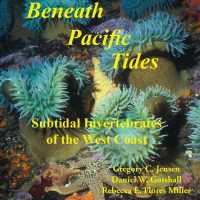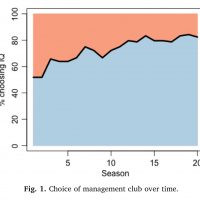Filter Results
Variability in body growth is an important part of variability in fish populations
It has long been established, indeed it is almost axiomatic, that annual variability in births of new fish (“recruitment”) is the most important reason why the total mass of fish populations varies from year to year. The rate of which individual fish grow (“body growth”) is also known to vary from year to year, but is generally considered to be fairly unimportant in explaining population variability.
Read moreA new guide on how to figure out which parts of DNA are actually expressed
Scientists trained in ecology and physiology are increasingly able to complement their work with the burgeoning field of “functional genomics”, i.e. the study of which parts of DNA (the “genome”) are actually expressed and used to make proteins under different conditions. A new guide is now provided for those from non-genetic fields to harness the power of fast computers and rapid technology in sequencing the letters in DNA, so that they can infer how animals respond to the environment.
Read moreThe blue-backed basslet, a new species from the Honduras
Reef fish species from waters deeper than 130 m are difficult to collect manually, because they are too deep for SCUBA divers. But now manned submersibles equipped with underwater vacuums are able to suck up new specimens with surprising alacrity. Among the specimens slurped up by one such submersible is brand new blue and gold species of basslet: the blue-backed basslet (Lipogramma adabeli), with distinct blue coloration, genetics, and habitat use distinguishing it from other similar species.
Read moreGreg Jensen Releases New Book: Beneath Pacific Tides
This winter, Greg Jensen is releasing his follow-up book, Beneath Pacific Tides: Subtidal Invertebrates of the West Coast. Like the charismatic crustaceans featured in his debut publication, the colorful and bizarre invertebrates found along the Pacific Coast are explored in this new user-friendly guide, featuring Jensen’s underwater photography.
Read moreMicro-slices of fish scales reveal effects of dams on lungfish diet
Australian lungfish are living fossils that have survived virtually unchanged since their appearance in the fossil record 340 million years ago. They are well known to have the nifty ability to survive for several days out of water. Now, a new study uses their scales to infer what they ate over periods of more than 50 years. The new technique first ages the lungfish by measuring radioactive signatures in the scales that track radioactivity from nuclear weapons testing in the 1950s and 1960s, and then having dated micro-slices of the fish scales, each slice is examined for carbon and nitrogen isotopes that unveil their food sources throughout their life.
Read moreStrong individual rights emerge naturally in gaming experiments
Many natural resources, such as grazing lands, forests, and fisheries, can be managed either by lots of people communally (common property), by top-down regulation, or by individual rights. A new analysis shows experimentally that individual rights emerge as the preferred choice when people are given freedom to choose among different clubs that each decide how to manage part of the resource.
Read moreFantastic beasts and where to find them
New and weird species are being discovered all the time, and the latest is the Narungga Frogfish (Histiophryne narungga), which has just been described. The name honors the Narungga tribe of indigenous Australians who traditionally inhabited the lands in which it was found. The new species comes in a variety of dotted forms, occurs in southern and western Australia, and is a member of the order Lophiiformes.
Read moreDoes more fish mean more money?
Bristol Bay in Alaska hosts one of the world’s largest salmon fisheries every year, targeting bountiful runs of sockeye salmon. The fishery is managed using escapement goals that ensure sufficient salmon escape the fishery every year to spawn upriver. Recently, increased escapement goals were proposed for Bristol Bay that were intended to allow more salmon to spawn upriver, because of calculations suggesting this would lead to larger average catches.
Read moreBetter estimates of fish status with spatial fish models
Fisheries stock assessments commonly ignore space when assessing the status of small pelagic fish species like herring, anchovy, and sardines, because including multiple areas adds a large of number of parameters to the models. Results from a new simulation framework based on herring in Haida Gwaii, British Columbia, now suggest that stock assessment estimates of spawning fish is improved when the models matched the true underlying changes in fish across areas, and therefore that future stock assessments should always include spatial structure when the fish population can be assigned to subpopulations.
Read moreNarwhals prefer serene glaciers over rambunctious glaciers
Combining data from glaciers with tracking devices on narwhals, reveals that these elusive marine mammals prefer glaciers that calve infrequently over active calving glaciers. The research, to be presented by SAFS professor Kristin Laidre at the Ocean Sciences Meeting next week, shows narwhals congregating at the outlets of serene glaciers in Greenland’s Melville Bay. Prof. Laidre speculates that the cold fresh water melting off the glacier may stun fish, making them easy prey for the hunting narwhals, while active glaciers produce more silt-filled waters that are harder to hunt in.
Read more
